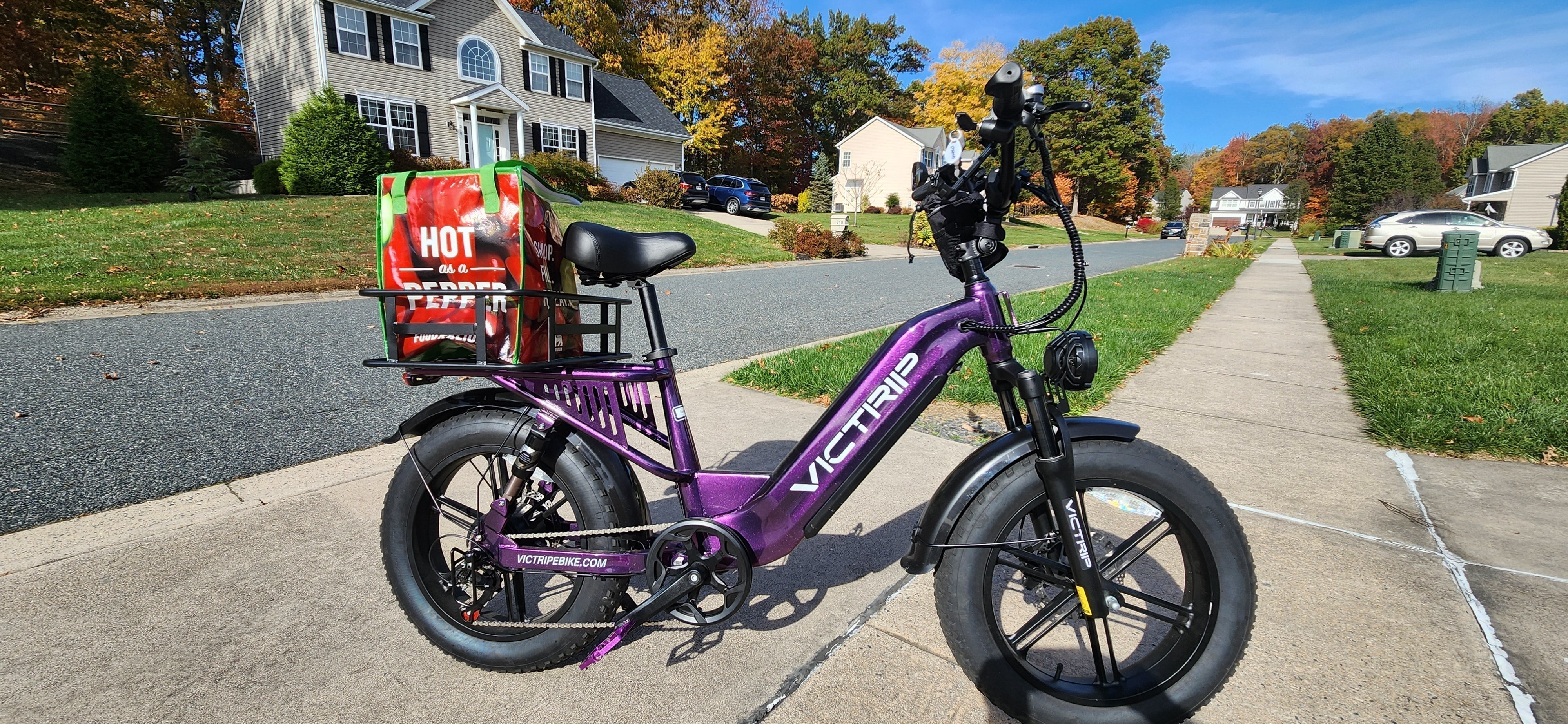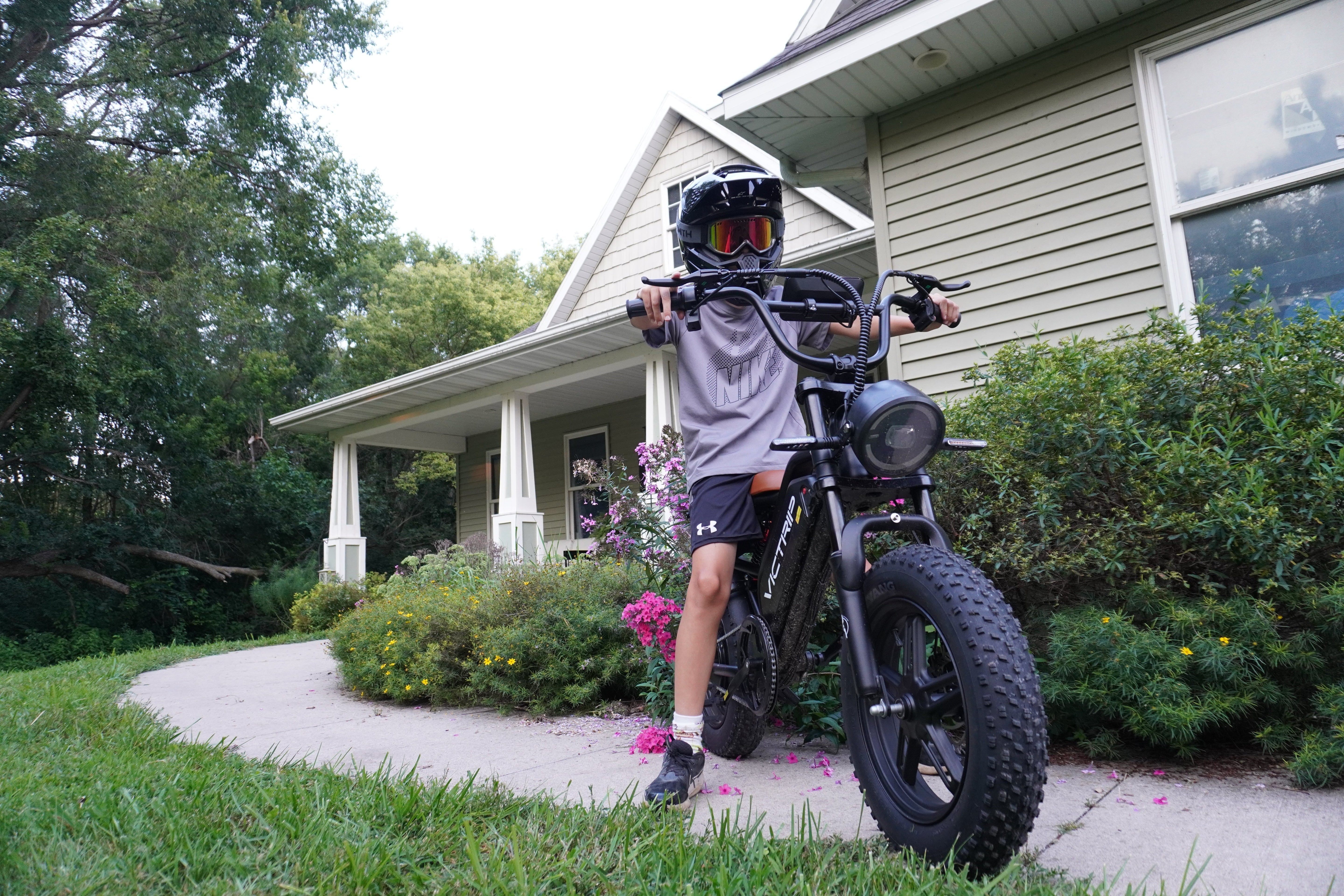
The phrase pedal assist electric bike health benefits may sound like marketing, but it's grounded in a growing body of science. Pedal-assist e-bikes (often shortened to “e-bikes”) let riders pedal while the motor provides proportional assistance; that simple feature reduces barriers to active transport and makes consistent, moderate-to-vigorous physical activity much more achievable for many people. In short: they turn “I can’t” into “I’ll try”—and that matters for public and personal health.
Key point: studies and systematic reviews show e-cycling increases overall activity and can improve cardiovascular fitness in previously inactive adults.
What Is a Pedal Assist Electric Bike? (Technology Primer)
A pedal assist electric bike uses a sensor to detect pedaling and supplies motor torque proportional to effort. Unlike throttle e-bikes (where you twist a throttle and get motor power with no pedaling), pedal assist requires rider input—so it keeps the rider active while making hills, headwinds, and commutes easier and faster.
Pedal-assist vs throttle — the workout difference
Because pedal-assist still requires pedaling, it typically elicits higher heart rate and oxygen consumption than a pure throttle ride and tends to produce more consistent activity than passive travel modes. Researchers measuring physiological responses have found that e-cycling often yields moderate exercise intensity—enough to meet recommended activity guidelines for many riders.
Read More: Pedal Assist Electric Bike vs Throttle: Which Is Right for You?
12 Science-Backed Health Benefits
Below I unpack 12 concrete health benefits, linking them to evidence and giving practical tips so you can use your pedal-assist e-bike as an accessible, effective health tool.
1. Cardiovascular improvements
Regular e-biking raises average heart rate and contributes to aerobic conditioning. Randomized pilot studies and systematic reviews report increases in cardiorespiratory fitness (VO₂peak) and improved markers of vascular health after weeks of e-bike use—especially for people who were previously inactive. In other words, e-bikes help strengthen the heart.
Practical tip: aim for 30–45 minutes of mixed-intensity rides 3–5 times per week; use lower assist on flats and higher assist on hills to manage perceived exertion while still raising heart rate.
2. Improved aerobic capacity and VO₂peak
Trials comparing e-bike commuting to being sedentary or to walking found measurable improvements in aerobic capacity after short programs (4–8 weeks) when participants regularly swapped car trips for e-bike trips. VO₂ improvements are especially notable in overweight or sedentary people because e-bikes get them to exercise more often.
3. Muscular strength and endurance gains
Riding—even with assistance—works the quadriceps, glutes, calves, and core. Over time, repeated pedaling increases muscular endurance; bursts of harder effort (low assist, higher cadence) build strength, while longer steady rides enhance endurance.
Training suggestion: include interval sets—2–4 minutes of lower assistance at higher cadence followed by 2 minutes of higher assist for recovery—to provoke adaptations.
4. Low-impact, joint-friendly exercise
For people with joint pain, obesity, or balance concerns, pedal-assist cycling offers a low-impact option that reduces compressive forces on knees and hips versus running. Several reviews highlight e-bikes’ value for older adults or those with mobility limitations because the motor compensates for reduced strength without removing the health benefits.
5. Weight management and metabolic effects
E-bike programs produce small but meaningful reductions in body mass and waist circumference when used regularly, especially when they replace car trips and increase weekly activity. Associations have also been reported between greater e-bike travel distance and reductions in diastolic blood pressure and body mass. While e-bikes alone aren’t a magic bullet for weight loss, they make sustainable activity much more likely.
6. Better mental health and reduced stress
Outdoor exercise—including cycling—boosts mood, reduces anxiety, and improves perceived well-being. E-biking has similar cognitive and mood benefits, with the added advantage that it reduces the stressors (like extreme fatigue or long commutes) that often make people skip exercise. Many participants in studies report e-bikes feel “less like exercise” but still improve mood and energy levels.

7. Enhanced balance, mobility and function
For older adults, regular cycling preserves balance and functional mobility. Using a pedal-assist electric bike encourages repeated movement patterns that help maintain coordination and independence—important determinants of healthy aging. Practical suggestion: start with shorter, flat rides and gradually increase distance to build confidence.
8. Respiratory and lung-health improvements
E-cycling elevates ventilation enough to stimulate respiratory muscles, improving breathing efficiency in some riders. While e-biking may not replace targeted respiratory therapy, it complements cardiovascular work that benefits lung health, especially in deconditioned individuals. Selected short-term trials show favorable shifts in vascular function and ventilatory responses after consistent e-bike use.
9. Reduced cardiometabolic risk markers
Regular moderate physical activity is linked to improved blood pressure, glucose regulation, and lipid profiles. Short interventions with e-bikes have shown reductions in arterial stiffness and other cardiometabolic markers in previously inactive adults—suggesting that e-bikes can be a part of risk-reduction strategies. Evidence quality varies, but trends are promising.
10. Greater adherence & long-term exercise consistency
One of the strongest practical advantages of pedal-assist e-bikes is adherence. People ride more frequently and for longer distances because the bike reduces barriers (sweat, hills, traffic). Reviews and observational studies consistently show higher usage and longer rides versus conventional bikes among users who otherwise wouldn’t cycle. That behavioral change—consistency—drives many long-term health outcomes.
11. Environmental & community health cobenefits
Switching short car trips to e-bike trips reduces emissions and air pollution exposure at a population level, which indirectly benefits cardiopulmonary health. Public-health analyses argue that increasing active travel (including e-bikes) yields major population health benefits and economic savings.
12. Accessibility: inclusive fitness for varied abilities
Because pedal-assist supports different levels of effort, it opens cycling to people with chronic conditions, older adults, and those returning from injury. That inclusivity expands who can participate in regular aerobic activity, narrowing health disparities tied to mobility barriers. Consider adaptive e-trikes or step-through frames if balance is a concern.
TOP PICK

VVICTRIP® T1 Foldable Electric Tricycle
Evidence snapshot: what the research says
Synthesis of the literature shows a consistent pattern: e-bikes raise total physical activity, increase ride frequency and distance, and produce physiological responses consistent with moderate exercise. Systematic reviews and randomized pilot trials (especially those targeting overweight or inactive adults) report improvements in cardiorespiratory measures, vascular function, and self-reported well-being after short-term programs. That said, study designs vary, sample sizes are sometimes small, and longer randomized trials are still emerging—so evidence strength ranges from moderate to promising rather than conclusive.
Practical tips: make pedal-assist workouts count
You don’t need to be a cyclist to get health improvements from a pedal assist electric bike health benefits program—just consistent rides and a few training principles.
Adjust assistance intelligently
-
Use lower assist on flats, higher assist on steep climbs if you want sustained moderate intensity.
-
Try progressive overload: reduce assist slightly every week or increase ride time.
Interval ideas
-
Warm-up 5–10 minutes at easy assist.
-
Repeat: 3–6 × (2–4 min low assist, 2 min recovery at higher assist).
-
Cool down 5–10 minutes.
Combine with strength work
Add two weekly strength sessions (bodyweight squats, hip bridges, calf raises) to complement cycling for better functional strength.
Nutrition & hydration
-
Fuel with a light carb snack before longer rides (banana, toast).
-
Hydrate—especially on warm days.
-
Post-ride: protein + carbs to support recovery.
Safety, bike fit, and ergonomics
Health gains rely on staying injury-free.
-
Bike fit: seat height, reach, and handlebar position should be adjusted to avoid knee pain and back strain.
-
Protective gear: always wear a helmet; consider gloves and lights for visibility.
-
Traffic awareness: route planning to prefer low-traffic streets increases safety and reduces stress.
-
Progression: build duration and intensity gradually—follow the 10% rule for weekly mileage increases.
Conclusion: How to start and measure results
If you want to translate pedal assist electric bike health benefits into real outcomes, choose a bike you like, plan achievable rides, and prioritize consistency. Start small, aim for 150 minutes of moderate activity over the week, and use intervals to accelerate fitness gains. Monitor how you feel, track simple metrics (duration, RPE, heart rate), and celebrate improvements in stamina, mood, and daily function—those are the wins that sustain behavior.
Quick starter plan (first 8 weeks)
-
Weeks 1–2: 3 × 15–20 min easy rides (comfortable assist).
-
Weeks 3–4: 3–4 × 20–30 min; include 1 interval session (see above).
-
Weeks 5–8: 4–5 rides/week, up to 45–60 min for 1–2 rides; reduce assist on select segments.
FAQs
Are pedal-assist e-bikes “real” exercise?
Yes. Multiple studies show pedal-assist riding elevates heart rate and oxygen uptake to levels consistent with moderate-intensity exercise. Riders may perceive it as easier, but physiologically they still work enough to gain cardiovascular and metabolic benefits.
How often should I ride to see benefits?
Aim for at least 150 minutes per week of moderate activity (e.g., 30 minutes on 5 days). If you’re new to activity, start with shorter rides (10–15 minutes) and build up. Consistency matters more than intensity for beginners.
Will an e-bike help me lose weight?
E-bikes can support weight loss by increasing daily energy expenditure and making active commuting more likely. Combine regular rides with sensible nutrition for better results. Evidence shows modest but meaningful reductions in body mass and waist circumference when e-bike use replaces car travel.
Are e-bikes safe for older adults?
Many older adults safely use e-bikes and gain mobility and fitness. Choose stable bike designs (trikes for balance concerns), get a proper fit, and start with short, low-traffic rides. Consult a healthcare provider if you have serious cardiac or balance conditions.
Is pedal-assist better than a regular bike for health?
Traditional bikes typically demand more effort per ride, but the real advantage of pedal-assist is adherence. If an e-bike gets someone riding who otherwise wouldn’t, its net health impact can be greater. Both have health value; choose the one you will use consistently.




Share:
Gears & Shifting: Single Speed vs. Multi Speed E-Bikes
Waterproof Electric Bikes for Mountain Adventures